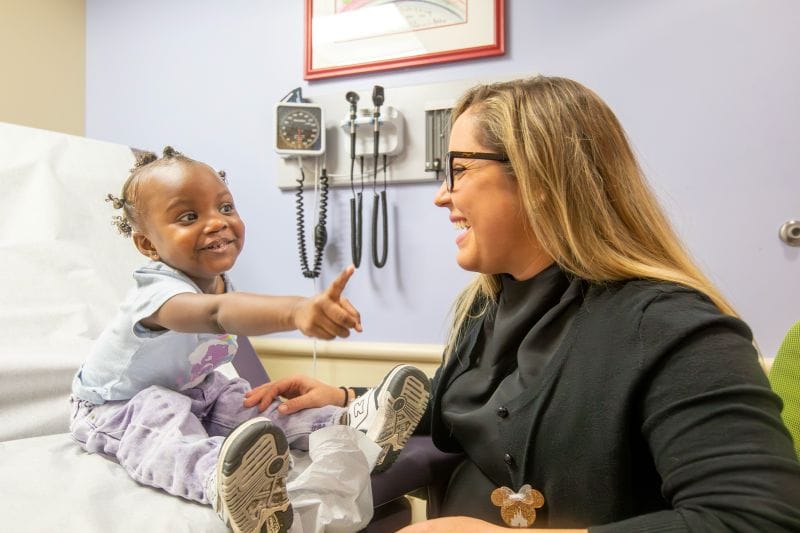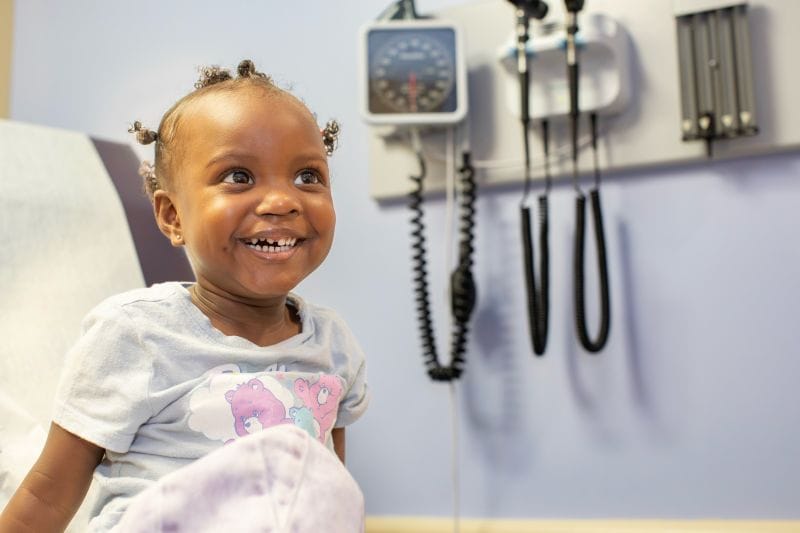Sassy and Spunky Sapphira: Cleft Lip and Craniofacial Awareness
“Hiiii! Hiii! HI!” says 2-year-old, Sapphira, who loves to play dress up, in the sweetest, most energetic voice over the phone as her mom, Regina, shares their cleft lip journey.
“She’s what – I call it – the 3 S’s: she's sassy, spicy and spunky,” laughs Regina. “This girl – she’s everything in one. She's an adventurer. She's very curious. She's not afraid of anything. She loves animals and she does gymnastics and swimming. She loves reading books, drawing and playing with her toys—and her favorite shows are Daniel Tiger and Mickey Mouse.”
Sapphira is Regina’s first-born baby. As a new mom-to-be, Regina was shocked to hear the news that her baby girl had a cleft lip during a routine sonogram at 20 weeks pregnant.
“I didn't know anybody else that had a cleft lip or palette, other than my friend who was telling me about her daughter,” says Regina. “I just thought it was something you would see on TV. I didn't think it would happen to my child based off of, you know, my family history.”
July marks Cleft Lip and Craniofacial Awareness Month, which helps to shed light on cleft lip being one of the most common craniofacial differences. A cleft lip is when the tissue on a baby’s lip doesn’t fully close during pregnancy, which results in a gap that can range in size and location. It occurs in about one in every 700 births in the United States.
“Sapphira was born with a unilateral cleft lip and alveolus, which means that her cleft involves the lip, the nasal floor and the gum line,” says pediatric plastic surgeon Jordan Halsey, M.D. at Johns Hopkins All Children’s Hospital. “In most cases, the cleft diagnosis is sporadic, and happens “randomly” without a known cause.”
Halsey helps to educate and support moms and families throughout their journey, no matter when they find their way to Johns Hopkins All Children’s.

“There is no reason for a parent to blame themselves or feel guilty,” says Halsey. “Cleft lip and palate is something we can fix, and fix well. While it is oftentimes unexpected, we want moms to feel reassured that we will take the best care of their child and remain a support throughout infancy, childhood and adolescence.”
Sapphira’s lip was repaired as a baby, which involved an early nasal correction to improve the symmetry of the nasal floor along with the overall nasal appearance. She will have additional surgical repair as she grows older.
“Seeing her for the first time after her surgery was done, I was completely shocked and impressed by the results. I remember thinking, ‘Wow! She looks great!’ She looked like she never had a cleft lip,” says Regina.
This is exactly what Halsey and her team of speech and language pathologists, team coordinators, pediatricians, orthodontists, audiologists and psychologists aim to do: help patients live their best lives.
“It is our job as their cleft surgeon and the ultimate goal of the cleft team to empower children and adults to recognize that having a cleft does not and should not ever hold them back from accomplishing anything they want in life,” says Halsey.
For more information about craniofacial differences, including cleft lip and palate, visit Johns Hopkins All Children’s Hospital Cleft Lip and Craniofacial Program.
READ MORE from Johns Hopkins All Children's Hospital:
- Full Circle at Johns Hopkins All Children’s Hospital
- Infant Receives Life-saving Heart Care at Johns Hopkins All Children’s Hospital
- Growing For All Children at Johns Hopkins All Children’s Hospital – NEW Wesley Chapel Hospital Coming Soon!
*Presented by Johns Hopkins All Children's Hospital


